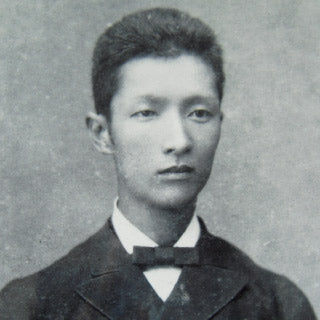CCPA Compliance
Data Rectification
You can use the link below to update your account data if it is not accurate.
Data Portability
You can use the links below to download all the data we store and use for a better experience in our store.
Access to Personal Data
You can use the link below to request a report which will contain all personal information that we store for you.
Do not Sell My Personal Information
You can submit a request to let us know that you do not agree for your personal information to be collected or sold.
Right to be Forgotten
Use this option if you want to remove your personal and other data from our store. Keep in mind that this process will delete your account, so you will no longer be able to access or use it anymore.

"Father of Japanese wine” Zenbe Kawakami
©︎Iwanohara Vineyard
“Is wine made also in Japan?” Some may ask, but the history of Japanese wine is actually quite old, dating back to the 1460s.
The Japanese first drank wine in 1466, when they imported Chinese wine, “Nanban wine”, from the Ming Dynasty. Domestic winemaking began more than 100 years later, around 1580. The process of mixing grape juice and liquor is described in ancient documents.
Then, in the Edo era (1603-1868), the number of viticulture regions and wine types gradually increased. In fact, the spread of winemaking in Japan is deeply related to the Netherlands. At the end of the Edo era (the 1800s), the translation of Dutch books began in earnest and the process of alcoholic fermentation of grapes was introduced. The word “wine” also appeared for the first time in such records.
Later, during the Meiji era (1868-1912), when Japanese winemaking began mainly in Kofu, Yamanashi, the government, wishing to modernise the country, encouraged viticulture and winemaking as part of its industrial development policy. The establishment of wineries increased and Japanese winemaking took off, with the first private winery in Japan being established in 1877.
In 1895, Zenbe Kawakami, the "father of Japanese wine", opened the Iwanohara Vineyard in Niigata. He imported many varieties of vines from Europe and the USA to improve the breed, and in 1927 succeeded in developing his own varieties, such as Muscat Bailey A, which suited Japan's climate.
Wine consumption increased after World War II. Contributing factors were Tokyo Olympics in 1964 and Japan World Exposition in 1970. In 1976, the Japan Sommelier Association was established. During the bubble economy in the late 1980s, Beaujolais Nouveau became a big boom. Then, in 1995, Shinya Tasaki won the World's Best Sommelier Competition, bringing wine to even greater prominence.
Subsequently, in 2015, the National Tax Agency established a method quality labelling standard for viticulture regions and varieties, which came into force in 2018. It is no longer possible to name a geographical wine unless the viticulture region and the winemaking region are the same. Thereby accelerating the expansion of vineyards and the construction of wineries in Japan. Wineries have now been established in almost all prefectures.
